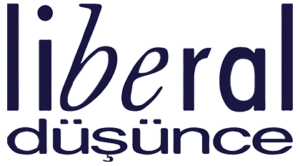Yazar: Doktora Öğrencisi | Trakya Üniversitesi, Sosyal Bilimler Enstitüsü, Kamu Yönetimi Anabilim Dalı
Liberal Düşünce Dergisi, Yıl: 29, Sayı:113, Kış 2024, ss. 213-235.
Öz
Liberalizm bireyin dışsal müdahalelere karşı özgürlüğünü savunan dünya görüşü şeklinde ifade edilebilmektedir. Liberal kuramda dışsal müdahaleler mutlak ve otokrat yönetimler ile anti-kapitalist toplumcu ideolojiler olarak kaydedilmektedir. Liberalleşme kavramı, politik arenada siyasal partilerin, seçimlerin, parlamento temsiliyetinin, özgür girişimciliğin, serbest piyasanın ve ekonominin serbest piyasalar eliyle yönetiminin inşa edilmesi anlamına gelmektedir. Rusya Federasyonu ve Çin Halk Cumhuriyeti 21. yüzyılın son çeyreğinden itibaren liberalleşme politikaları izleyen iki örneği temsil etmektedir. Bu çalışmanın amacı da bu iki örneğin liberal dönüşüm süreçlerini incelemek ve birbirleri ile karşılaştırmaktır. Benzerlikleri ve farklılıkları görülen bu iki modelden Rusya Federasyonu, Sovyet Sosyalist Cumhuriyetler Birliği’nin çözülmesinden sonra Batı tipi liberal temsilî demokrasinin tesisi yönünde reformlar yapmış aynı zamanda şok terapi metoduyla iktisadi liberalleşme politikası izlemiş ancak siyasal alandaki liberal dönüşüm istikrarı ekonomik alanın ötesinde seyretmiştir. Çin Halk Cumhuriyeti’nde ise siyasal rejim titizlikle korunmuş
ve Çin Komünist Partisi iktidarıyla serbest piyasa adımları atılmıştır.
Anahtar Kelimeler: Liberalizm, Geçiş Ekonomileri, Serbest Piyasa Ekonomisi, Siyasal Liberalleşme, Demokrasi.
Liberalization Models: The Examples of Russia and China
Abstract
Liberalism can be expressed as a worldview that defends the freedom of the individual against external interference. In liberal theory, external interventions are recorded as absolute and autocratic governments and anti-capitalist socialist ideologies. The concept of liberalization means the establishment of political parties, elections, parliamentary representation, free entrepreneurship, free markets, and the management of the economy by free markets in the political arena. The Russian Federation and the People’s Republic of China are two examples of liberalization policies since the last quarter of the 21st century. The aim of this study is to examine and compare the liberal transformation processes of these two examples. Of these two models, whose similarities and differences are seen, the Russian Federation, after the dissolution of the Union of Soviet Socialist Republics, undertook reforms to establish a Western-style liberal representative democracy and at the same time pursued a policy of economic liberalization with the shock therapy method, but the stability of the liberal transformation in the political sphere remained beyond the economic sphere. In the People’s Republic of China, the political regime was meticulously preserved, and free market steps were taken with the power of the Chinese Communist Party.
Keywords: Liberalism, Economies in Transition, Free Market Economy, Political Liberalization, Democracy.



